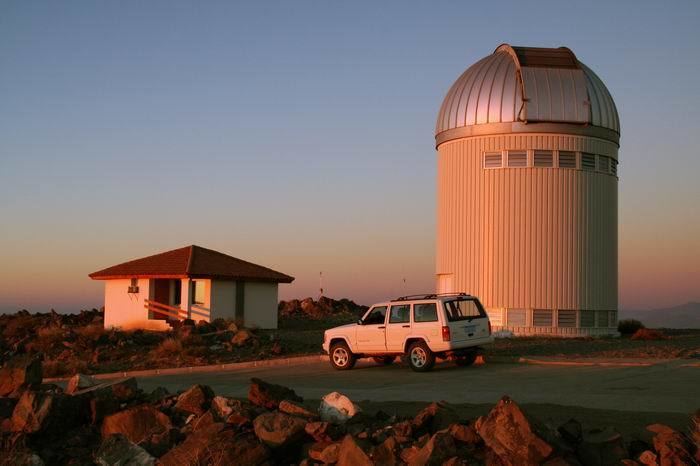 | ||
The Optical Gravitational Lensing Experiment or OGLE is a Polish astronomical project based at the University of Warsaw that is chiefly concerned with discovering dark matter using the microlensing technique. Since the project began in 1992, it has discovered several extrasolar planets as a bonus. The project is led by Andrzej Udalski, who is a co-author of the discovery of OGLE-2005-BLG-390Lb.
The main targets of the experiment are the Magellanic Clouds and the Galactic Bulge, because of the large number of intervening stars that can be used for microlensing during a stellar transit. Most of the observations have been made at the Las Campanas Observatory in Chile. Cooperating institutions include Princeton University and the Carnegie Institution.
The project is now in its fourth phase. The first phase, OGLE-I (1992–1995), was the project pilot phase; for OGLE-II (1996–2000), a telescope was specially constructed, placed in Las Campanas Observatory and dedicated to the project. The 8-chip mosaic CCD camera was built in Poland and shipped to Chile. OGLE-III (2001–2009) was primarily devoted to detecting gravitational microlensing events and transiting planets in four fields: the Galactic Bulge, the constellation Carina, and toward both Magellanic Clouds. As a byproduct of the constant monitoring of hundreds of millions of stars, the largest catalogs of variable stars were constructed, and the first exoplanets discovered using the microlensing technique were detected. In 2010, following engineering work in 2009, the fourth and current phase, OGLE-IV, was started using a 32-chip mosaic CCD camera. The main goal for this phase is to increase the number of planetary detections using microlensing, enabled by the new camera.
Recently OGLE team in cooperation with scientist mostly from USA, New Zealand and Japan proved that small, Earth-like planets can exist in great distance from stars around which they revolve despite there being other star near them.
Planets discovered
At least seventeen planets have so far been discovered by the OGLE project. Eight of the planets were discovered by the transit method and six by the gravitational microlensing method.
Planets are shown in the order of discovery. Planets in multiple-planet systems are highlighted in yellow. Please note that list below may not be complete.
Notes: For events detected by the gravitational microlensing method, year stands for OGLE season, BLG means that an event detected is in the Galactic BuLGe, and the following 3-digit number is an ordinal number of microlensing event in that season. For events detected by the transit method TR stands for TRansit and the following 3-digit number is an ordinal number of transit event.
